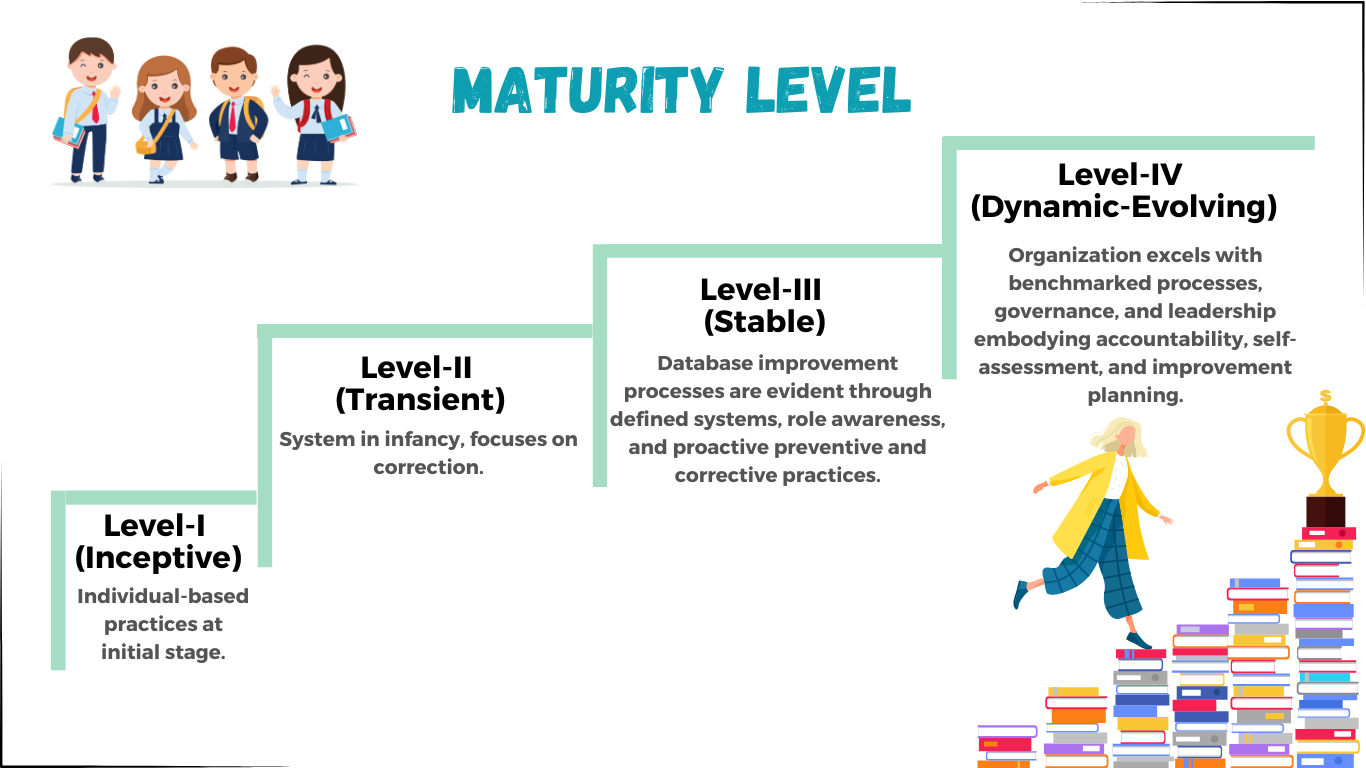Assessment Framework of SQAA

May 16, 2024
The School Quality Assessment and Accreditation (SQAA) framework, designed by the Central Board of Secondary Education (CBSE) in India, serves as a comprehensive tool to evaluate and enhance the quality of schools across the country. Its primary aim is to establish a benchmark for school quality that aligns with international standards, ensuring that educational institutions provide a holistic and well-rounded experience for students. SQAA's assessment criteria focus on fostering an environment that supports academic excellence, inclusivity, student well-being, and overall institutional effectiveness.
The framework is structured around key domains that cover various aspects of school functioning. These domains include Scholastic Processes, Co-scholastic Activities, Infrastructure and Resources, Human Resources, School Leadership and Governance, and Beneficiary Satisfaction. Each domain contains specific indicators to evaluate the effectiveness and quality of school practices, from the learning methodologies employed to infrastructure quality and governance transparency. By examining these areas, SQAA provides a 360-degree view of a school’s performance, helping institutions identify strengths and areas requiring improvement.
SQAA’s approach is data-driven, with a systematic process that includes self-assessment, external assessment, and continuous monitoring. Schools begin with an internal evaluation, reflecting on their practices and preparing for the external audit conducted by certified assessors. This dual-layered assessment model encourages schools to engage in self-reflection and promotes accountability. The use of standardized metrics and evaluation tools further ensures objectivity, allowing schools of all types to participate in the assessment while maintaining fairness in the evaluation process.
The benefits of SQAA accreditation extend beyond certification. Schools that undergo the SQAA process demonstrate their commitment to quality education, which can attract more students, increase parental trust, and potentially open up access to additional resources and support from educational boards and government initiatives. Additionally, SQAA accreditation encourages schools to adopt best practices, innovate in teaching methods, and continuously improve their overall educational standards. Ultimately, the SQAA framework acts as a catalyst for excellence in Indian education, fostering an ecosystem where schools are motivated to excel and provide students with a nurturing, high-quality learning environment.
The SQAA framework also emphasizes the importance of inclusivity and equity within schools, encouraging them to create environments that cater to the diverse needs of all students. This includes accommodating students with special needs, ensuring gender equality, and promoting cultural inclusiveness. By assessing how well schools integrate these principles into their policies and daily practices, SQAA encourages institutions to prioritize accessibility and equality, creating a supportive atmosphere where all students can thrive. Schools that score well in these areas not only demonstrate their commitment to inclusivity but also set a standard for other institutions aiming to cultivate a diverse and welcoming learning environment.
Moreover, the SQAA framework is designed to be adaptable, allowing it to evolve with changing educational requirements and global trends. This flexibility ensures that schools are continually evaluated against current standards rather than static criteria, making the framework dynamic and relevant to modern educational needs. Regular updates and revisions to the SQAA guidelines encourage schools to stay ahead of educational innovations and best practices. As a result, SQAA-accredited schools are better positioned to offer an education that not only meets today’s standards but also prepares students for future challenges in an increasingly globalized world.
To assist Schools in their SQAAF Journey, Luneblaze provides a comprehensive AI-enabled end-to-end solution to schools for all their accreditation criteria needs, be it documents & evidence creation, self-assessment filing support on the CBSE SQAAF portal, workflow management, faculty trainings, audits, and consultancy support. With the help of Luneblaze’s AI-enabled solutions, institutions can organize and manage all their data related to accreditation and assessments like SQAAF for schools.
Together, let’s raise educational standards. Partner with Luneblaze for SQAAF success. Reach out: sqaaf@luneblaze.com
Trusted by
100+
Institutions
worldwide
since 2017
Get started with Accreditation Excellence
Explore how our AI-enabled accreditation solution simplifies the accreditation journey









